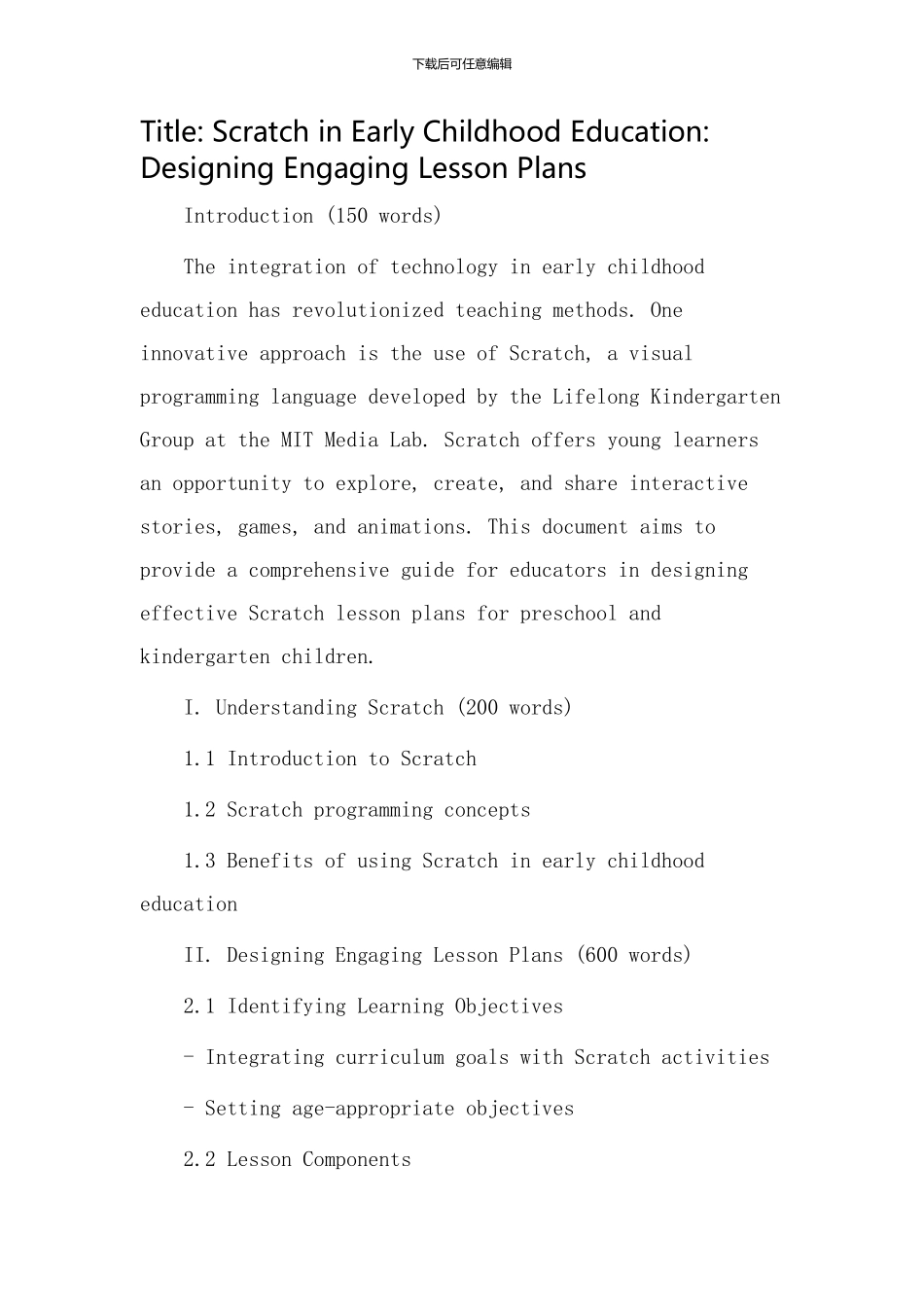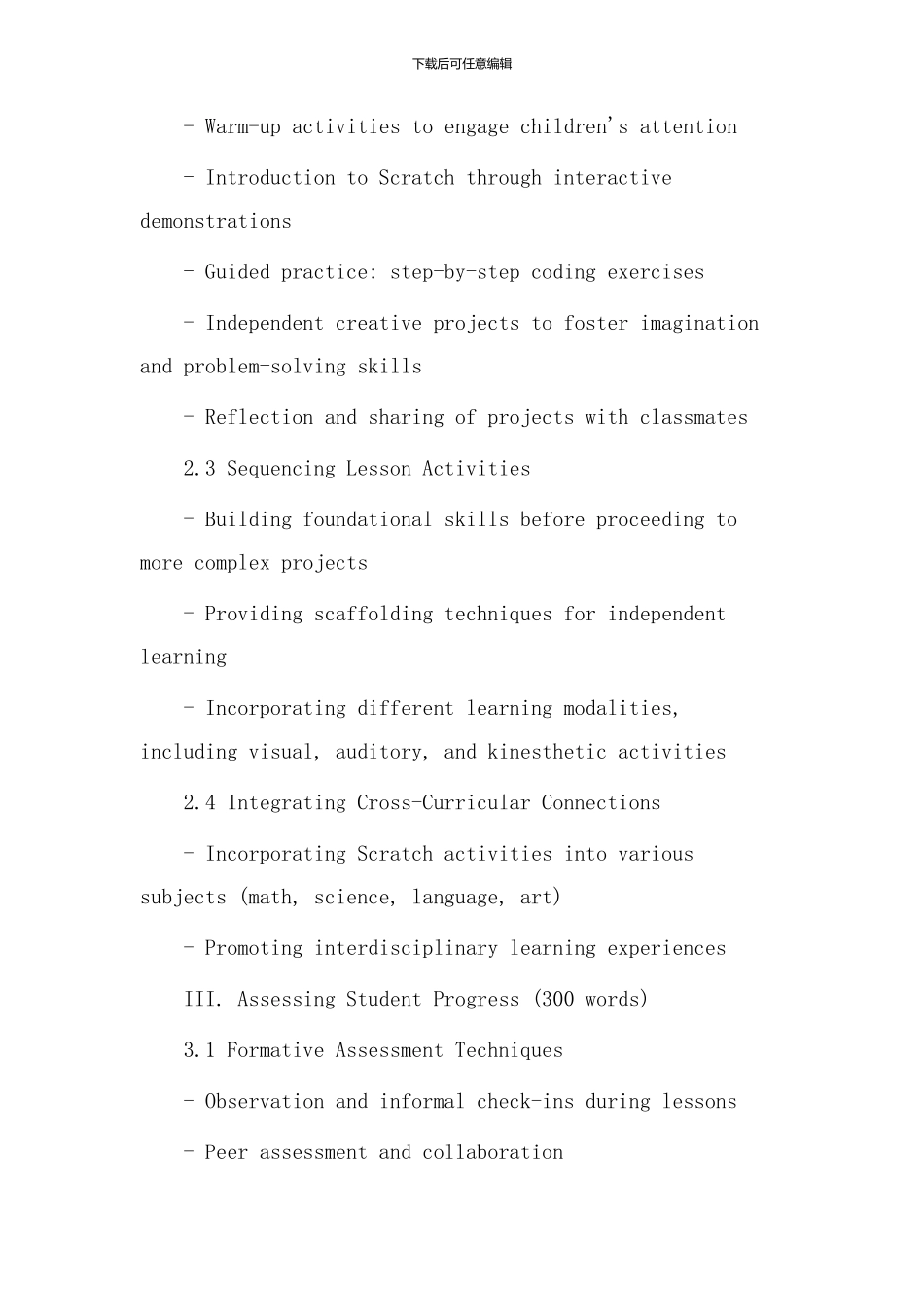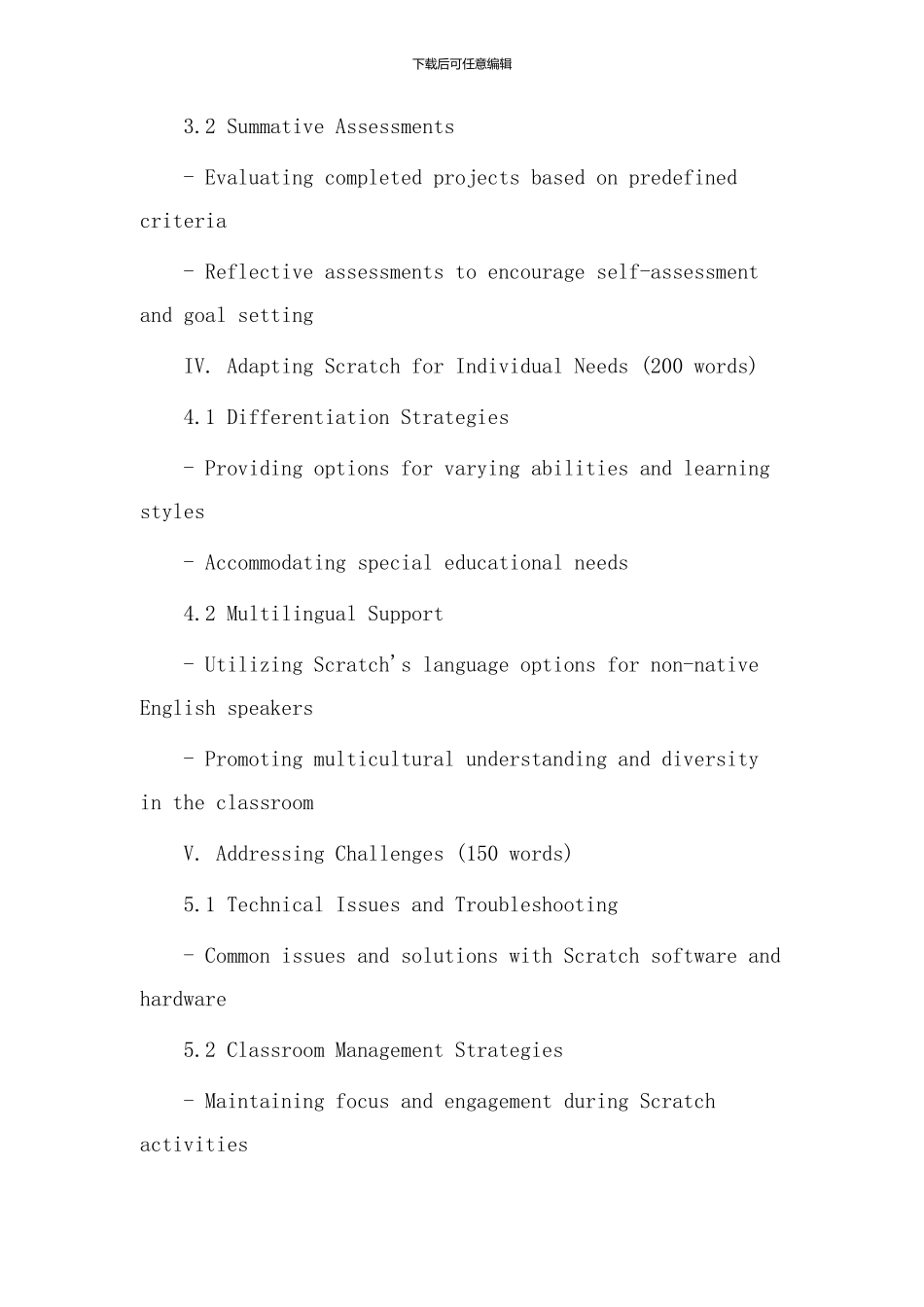下载后可任意编辑Title: Scratch in Early Childhood Education: Designing Engaging Lesson PlansIntroduction (150 words)The integration of technology in early childhood education has revolutionized teaching methods. One innovative approach is the use of Scratch, a visual programming language developed by the Lifelong Kindergarten Group at the MIT Media Lab. Scratch offers young learners an opportunity to explore, create, and share interactive stories, games, and animations. This document aims to provide a comprehensive guide for educators in designing effective Scratch lesson plans for preschool and kindergarten children.I. Understanding Scratch (200 words)1.1 Introduction to Scratch1.2 Scratch programming concepts1.3 Benefits of using Scratch in early childhood educationII. Designing Engaging Lesson Plans (600 words)2.1 Identifying Learning Objectives- Integrating curriculum goals with Scratch activities- Setting age-appropriate objectives2.2 Lesson Components下载后可任意编辑- Warm-up activities to engage children's attention- Introduction to Scratch through interactive demonstrations- Guided practice: step-by-step coding exercises- Independent creative projects to foster imagination and problem-solving skills- Reflection and sharing of projects with classmates2.3 Sequencing Lesson Activities- Building foundational skills before proceeding to more complex projects- Providing scaffolding techniques for independent learning- Incorporating different learning modalities, including visual, auditory, and kinesthetic activities2.4 Integrating Cross-Curricular Connections- Incorporating Scratch activities into various subjects (math, science, language, art)- Promoting interdisciplinary learning experiencesIII. Assessing Student Progress (300 words)3.1 Formative Assessment...


